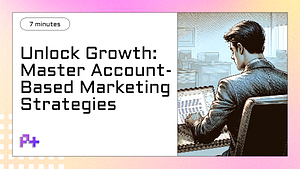Understanding Customer Lifetime Value (CLV)
Understanding Customer Lifetime Value (CLV) is essential for businesses aiming to maximize their profitability and foster long-term customer relationships. CLV refers to the total revenue a business can expect from a single customer account throughout their engagement with the company. By calculating CLV, businesses can better understand how much they should invest in acquiring customers and retaining them. This metric not only helps in making informed marketing decisions but also aids in aligning business strategies to enhance customer satisfaction and loyalty.
To calculate customer lifetime value, businesses typically use the formula: CLV = (Average Purchase Value) x (Average Purchase Frequency) x (Customer Lifespan). The average purchase value is determined by dividing total revenue by the number of purchases, while the average purchase frequency is calculated by determining how often a customer buys within a specific timeframe. Lastly, the customer lifespan refers to the average duration a customer continues to buy from a business. Understanding these components allows businesses to segment their customers effectively and tailor their marketing efforts to different customer profiles, ultimately driving higher CLV.
Maximizing customer lifetime value involves implementing strategies that enhance customer experience and loyalty. This can include personalized marketing campaigns, loyalty programs, and exceptional customer service. By focusing on retaining existing customers rather than solely acquiring new ones, businesses can significantly increase their CLV. Additionally, understanding customer behavior and preferences through data analytics can lead to more targeted offers and improved engagement, further contributing to higher lifetime value. In summary, a deep understanding of CLV not only empowers businesses to make strategic decisions but also fosters a customer-centric approach that can lead to sustained growth and profitability.
Importance of Customer Lifetime Value for Your Business
Understanding the importance of customer lifetime value (CLV) is essential for any business aiming to maximize profitability and enhance customer relationships. CLV represents the total revenue a business can expect from a single customer throughout their entire relationship. By quantifying this value, businesses can make informed decisions regarding marketing strategies, customer retention, and resource allocation. Recognizing that acquiring new customers often costs significantly more than retaining existing ones, businesses that prioritize CLV can focus on nurturing long-term relationships, leading to sustainable growth.
Furthermore, measuring customer lifetime value enables businesses to segment their customer base effectively. By analyzing CLV data, companies can identify high-value customers and tailor their marketing efforts to meet these customers specific needs and preferences. This targeted approach not only increases customer satisfaction but also boosts conversion rates and enhances brand loyalty. For instance, businesses can create personalized marketing campaigns or loyalty programs aimed at retaining these high-value customers, ensuring they continue to contribute positively to the bottom line over time.
Lastly, understanding CLV allows businesses to make strategic decisions about their overall marketing budget. By knowing how much a customer is worth over their lifetime, organizations can determine how much they can afford to spend on acquiring new customers without jeopardizing profitability. This insight leads to a more effective allocation of marketing resources, ensuring that funds are directed towards channels and strategies that yield the highest return on investment. Ultimately, recognizing the importance of customer lifetime value empowers businesses to build stronger relationships with their customers, fostering loyalty and driving long-term success.
How to Calculate Customer Lifetime Value: Step-by-Step Guide
Calculating customer lifetime value (CLV) is crucial for businesses seeking to understand the long-term value of their customer relationships. To begin, you need to gather essential data: average purchase value, average purchase frequency, and customer lifespan. The average purchase value is determined by dividing your total revenue over a specific period by the number of purchases made during that time. Next, calculate the average purchase frequency by dividing the total number of purchases by the number of unique customers. Finally, the customer lifespan is an estimate of how long a typical customer continues to make purchases from your business, usually measured in months or years.
Once you have this data, you can use a straightforward formula to calculate CLV. The most common formula is: CLV = (Average Purchase Value) x (Average Purchase Frequency) x (Customer Lifespan). For example, if your average purchase value is $50, customers make purchases four times a year, and the average customer lifespan is five years, the calculation would be: $50 x 4 x 5 = $1,000. This means that, on average, each customer is worth $1,000 over their lifetime with your business. By understanding this figure, you can make informed decisions about marketing budgets, customer acquisition costs, and overall business strategy.
In addition to the basic calculation, businesses should consider other factors that can influence customer lifetime value. These factors include customer retention rates, upselling opportunities, and the cost of acquiring new customers. By improving customer retention through loyalty programs or personalized marketing, you can increase the customer lifespan and, consequently, the CLV. Moreover, by analyzing different customer segments, you can tailor your strategies effectively, ensuring that you focus your resources on the most profitable customers. Understanding and calculating customer lifetime value empowers businesses to build stronger relationships with their customers and drive sustainable growth.
Strategies to Improve Customer Lifetime Value
Improving customer lifetime value (CLV) is essential for any business looking to maximize profitability and foster long-term relationships with its customers. One effective strategy is to enhance customer engagement through personalized experiences. By leveraging data analytics, businesses can gain insights into customer behavior and preferences, allowing them to tailor their marketing efforts. This could involve sending personalized email campaigns, offering targeted discounts, or recommending products based on past purchases. When customers feel valued and understood, their loyalty increases, ultimately leading to a higher CLV.
Another key strategy to boost customer lifetime value is implementing a robust loyalty program. Such programs incentivize repeat purchases by rewarding customers for their loyalty. Businesses can offer points for every purchase, which can later be redeemed for discounts or exclusive products. This not only encourages customers to return but also fosters a sense of community around the brand. Furthermore, a well-structured loyalty program can help gather valuable data on customer preferences, enabling businesses to refine their offerings and marketing strategies, thereby enhancing overall customer satisfaction and CLV.
Lastly, investing in exceptional customer service can significantly impact customer lifetime value. Providing prompt and effective support makes customers feel valued and appreciated. Businesses should ensure that their customer service teams are well-trained and equipped to handle inquiries and resolve issues efficiently. Additionally, utilizing customer feedback to make improvements demonstrates a commitment to customer satisfaction, further solidifying trust and loyalty. When customers have positive experiences, they are more likely to remain loyal and recommend the brand to others, ultimately leading to an increase in their lifetime value.
The Relationship Between CLV and Customer Acquisition Cost (CAC)
Understanding the relationship between Customer Lifetime Value (CLV) and Customer Acquisition Cost (CAC) is crucial for businesses aiming to optimize their marketing strategies and enhance profitability. CLV represents the total revenue a business can expect from a single customer throughout their entire relationship, while CAC refers to the costs incurred to acquire a new customer. The interplay between these two metrics is vital: a high CLV relative to CAC indicates that a company can invest more in acquiring customers, leading to sustainable growth. Businesses that grasp this relationship can make informed decisions on budget allocation, marketing campaigns, and customer retention strategies.
When a company has a low CAC and a high CLV, it signifies a healthy business model. For instance, if a company spends $100 to acquire a customer (CAC) but expects to generate $1,000 from that customer over their lifetime (CLV), the return on investment is substantial. This favorable ratio allows businesses to reinvest profits into further customer acquisition efforts, thus creating a cycle of growth. On the other hand, if CAC exceeds CLV, businesses may face financial strain, as they would essentially be losing money on each customer. Companies should regularly analyze their CAC and CLV metrics to ensure they are aligned, adjusting their marketing strategies to improve either figure as necessary.
Moreover, the relationship between CLV and CAC also emphasizes the importance of customer retention. Increasing CLV can often be achieved by focusing on customer loyalty and satisfaction, thereby promoting repeat purchases. By enhancing the customer experience and implementing loyalty programs, businesses can extend the duration of customer relationships, which in turn increases CLV and reduces the pressure on CAC. Ultimately, understanding and optimizing the relationship between CLV and CAC is essential for businesses not only to attract new customers but also to cultivate long-term relationships that contribute to overall success and profitability.



